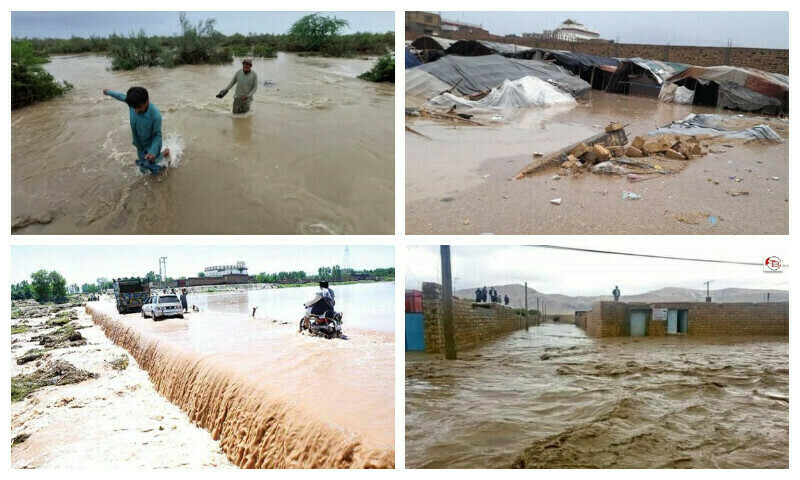The devastation caused by heavy rains continues across various districts of Balochistan, severely damaging infrastructure. Hundreds of mud houses have collapsed, and several sections of the Quetta-Chaman highway have been washed away. Due to the torrential rains, mobile phone and internet services, and electricity supply have been disrupted in many districts of Balochistan. Additionally, three more people have died in accidents caused by the rain and flooding.
The total death toll in Balochistan due to the recent rains has now reached 33.
After the torrential rains, low-lying areas in the districts of Ziarat, Killa Saifullah, Khuzdar, Loralai, Jhal Magsi, Sibi, Jaffarabad, Nasirabad, Lasbela, and Bolan have been submerged.
The provincial government has declared Jhal Magsi a disaster-stricken area, following Kalat, Ziarat, Sohbatpur, Lasbela, Awaran, Jaffarabad, Usta Muhammad, Loralai, and Chaghi. Authorities are attempting to maintain communication in the highland areas through the Levies wireless system.
In Chaman, Killa Abdullah, Killa Saifullah, and Ziarat, floods have damaged orchards and crops. In these four districts, several kilometers of roads, bridges, and numerous houses have been washed away. According to the government control room, hundreds of displaced people in Killa Abdullah and Killa Saifullah are living under the open sky.
According to the Provincial Disaster Management Authority (PDMA), since July 1, a total of 33 people, including 13 children, have died due to the rains, while 15 others have been injured, including 11 children.
The rains have completely destroyed 558 houses, and 13,986 houses have been partially damaged. A total of 109,903 people have been affected by the rains.
The torrential rains in Balochistan have destroyed crops on 58,799 acres of land. Floodwaters have killed 373 livestock, and seven bridges on the national highway have also been damaged.
After the heavy rains, the Quetta-Chaman railway line has been closed. The Khojak Tunnel has filled with mud carried by floodwaters, and Harnai district has been cut off. A breach in the Rabi Canal has submerged dozens of villages, while a Levies checkpoint on the Sindh-Balochistan border has also been washed away by floodwaters.
Balochistan is no stranger to the devastating impacts of heavy rains and floods. The region’s rugged terrain and sparse infrastructure make it particularly vulnerable to extreme weather events.
Historically, Balochistan has experienced several significant flood disasters. For instance, in 2010, the region was severely affected by the catastrophic floods, causing widespread destruction of homes, crops, and infrastructure. The floods displaced thousands of people and led to a humanitarian crisis, with many areas cut off due to damaged roads and bridges.
In subsequent years, Balochistan has continued to face similar challenges. Seasonal monsoon rains often lead to flash floods, particularly in the mountainous and arid regions where water drainage systems are inadequate. These floods can cause extensive damage to agriculture, the main livelihood for many residents, and lead to significant losses of livestock, further exacerbating poverty in Balochistan.
Infrastructure in Balochistan, including roads, bridges, and communication networks, is frequently damaged during such events, highlighting the need for better disaster preparedness and resilient infrastructure in the region.

